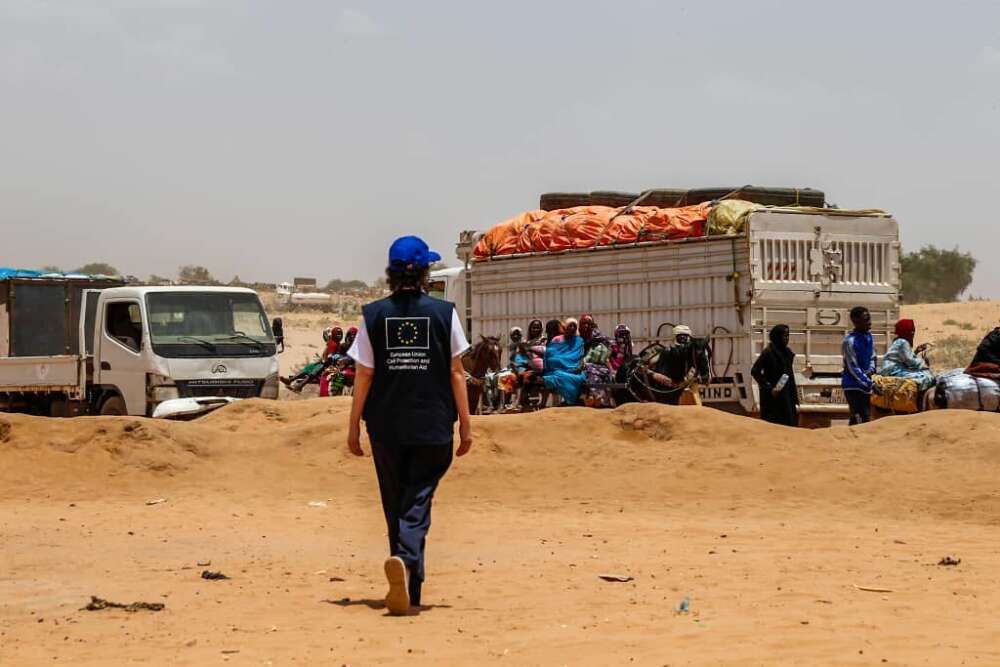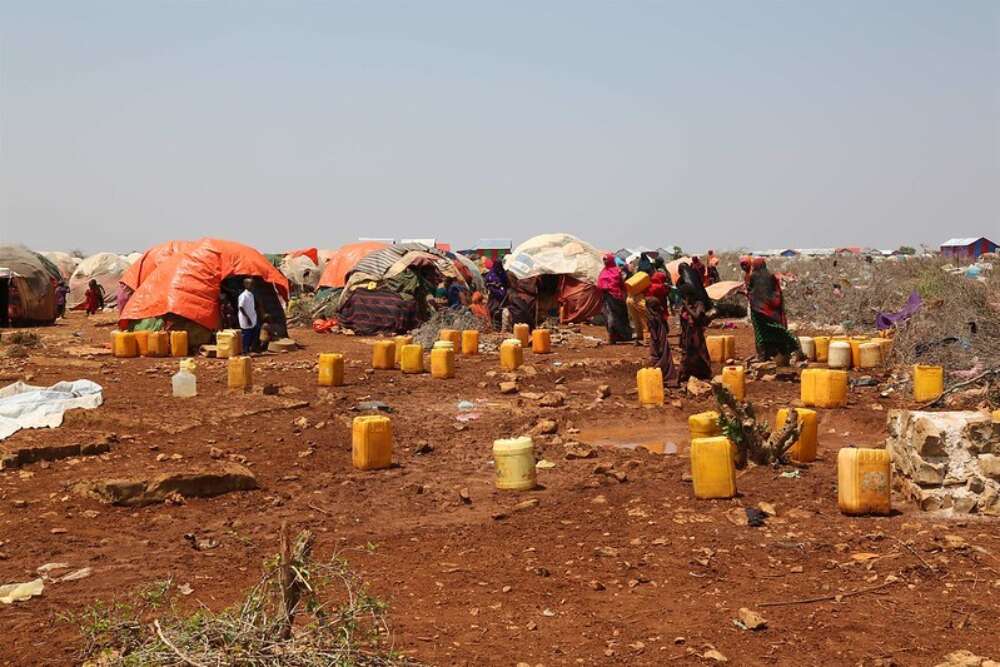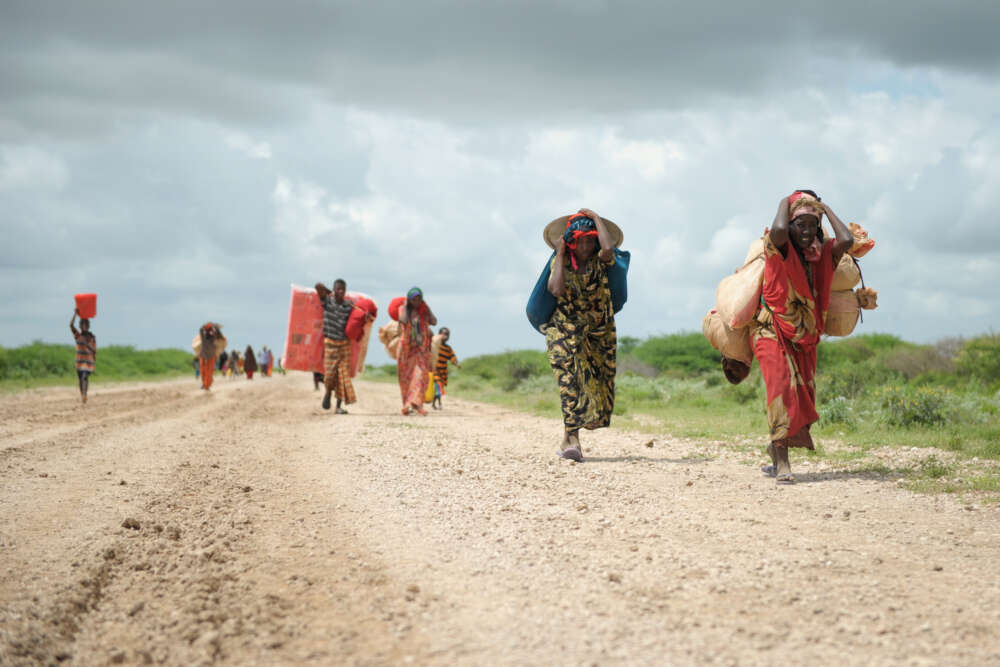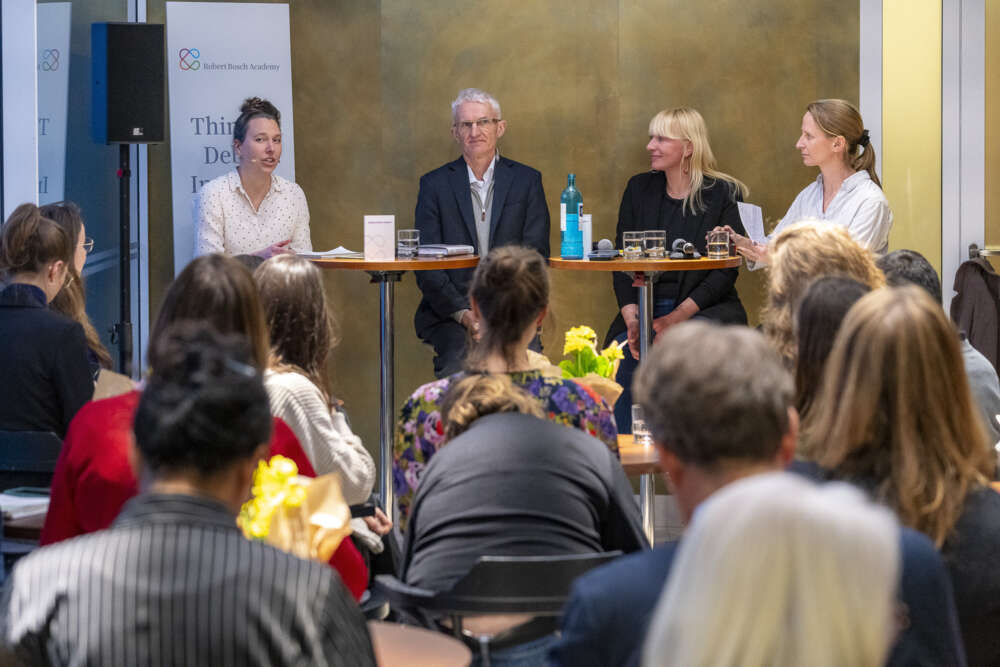Humanitarians and the Climate Emergency
The Ethical, Practice and Cultural Challenges

The humanitarian profession has boomed over the last 40 years. International humanitarianism has formed, stormed, normed, and performed at an unprecedented scale, helping billions of people to survive and cope. The profession has become both increasingly effective and intensely institutionalized, and is now committed to a very broad set of different values and goals that reach well beyond saving and protecting human life.
The humanitarian field has done all of this as professional institutions are concerned mostly with wartime crises. Today’s humanitarians have evolved as creatures of war. They have grown operational limbs, legal minds, niche expertise, and survival habits to fit a role that protects and assists people enduring wartime suffering. This was right and good, as war has remained a central challenge to international order over the last four decades.
But today, the biggest strategic challenge facing the humanitarian sector is the global climate emergency – the exponential rise in the incidence and intensity of climate-related disasters due to climate change. From now on, the climate emergency will be the dominant context in which all humanitarians work. Climate is not simply one more ‘issue’ that humanitarians must add to their ever-expanding list of cross-cutting priorities. Now, it is a constant and rapidly emerging global disaster with universal reach. Our sense of intersectionality needs to be reversed. The climate emergency will not intersect with other areas: instead, everything will intersect with climate change. This is a whole new paradigm for humanitarians, and we need to urgently reframe our vision and approach. Climate is the highway. States, the economy, agriculture, water, and cities are the much smaller intersecting roads on which we try to cross the climate highway.
Many of today’s large humanitarian institutions are already maladapted for the climate emergency, and they need to evolve incredibly fast. Some of the skills and traits that international agencies developed as ‘war humanitarians’ – like their growing expertise in social protection, livelihoods, food security, health, displacement, family tracing, and digital working methods – will cross over well to climate humanitarianism. But in other areas, humanitarian organizations are unprepared and must adapt. Many are already working hard to do so. This hyper-evolution of humanitarian practices requires an urgent change in three institutional areas – ethics, practice and culture.
The Ethical Challenge
Over the years, the humanitarian profession has settled on a moral system of goal-based and action-guiding principles. Most humanitarian agencies recognize the first four principles of the Red Cross and Red Crescent Movement as formulated in 1965 – humanity, impartiality, neutrality, and independence. They also adhere to the Code of Conduct of 1991 and the more recent Core Humanitarian Standard of 2014, both of which place a much greater emphasis on process principles – i.e., how to work with people fairly and effectively.
For this reason, humanitarians tend to describe the field as a ‘principled’ profession. Many of these principles carry over well to addressing the climate emergency. Humanity and impartiality will rightly remain the core goal of humanitarian institutions: “to protect life and health, and ensure respect for the human being” and to do so fairly without discrimination and with prioritization based “on need alone.” Existing commitments to inclusion, participation, capacity-building, sustainability, and accountability in the two other Codes will also translate well for climate-related disasters – but humanitarian principles will struggle if massive needs make it impossible to work easily with individual caseloads.

However, the climate emergency poses profound ethical challenges that require a new set of action-guiding principles. Some of these will continue the slightly utopian tradition of humanitarian ideals – but one ethical challenge, in particular, may be alarmingly dystopian.
The Moral Shock of Massive Needs
Given the sheer scale of the climate emergency, it may lead to a constant cascade of disastrous events worldwide that overwhelms the existing human capacity to cope. Governments at all levels may fail to provide a bare minimum of aid and support to the billions in need. International humanitarian aid will be similarly overwhelmed.
In short, the climate emergency could become a continuous global catastrophe rather than a sequence of distinct disasters. There are signs that this more constant phase of the climate emergency is already beginning, with every month bringing new storms, floods, fires, and heatwaves all around the world. The climate emergency is likely to produce a new phenomenon of ‘massive needs’, and even some new conception of ‘total disaster’ that is similar to the term ‘total war’. Many emergency philosophers are exploring this idea of how such existential threats may destroy the world as we know it or lead to the extinction of the human species.
Global catastrophe and massive needs pose a significant moral challenge to the humanitarian profession because – simply put – there is very little humanitarians can do. A global catastrophe would present a huge moral shock to humanitarian institutions, because it would force them into the tragic ethical realm of triage and a constant feeling of moral helplessness and extreme distress.
While every humanitarian today has known instances of moral distress, they usually find a sufficient sense of agency and justice in some areas of their work. In contrast, continuous massive needs could mean that moral helplessness will become the main context in which humanitarians work. New principles of triage, exclusion and regret would become central in humanitarian ethics. Under such conditions, principles of humanity and impartiality would regularly be impossible. What we might call ‘catastrophe humanitarianism’ and the ‘catastrophe humanitarian’ will be very different in their choices and impact on humanitarianism as we know it.
Dystopian fiction regularly explores the moral shock of massive needs and how people often resolve this tension through the extreme ethics of in-group humanity. Survivalist groups often care only for their own, and develop a new ethic of the justified killing of those they view as competitors.
The quintessential eco-apocalyptic novel is The Death of Grass by John Christopher, which is set in England in the 1950s. It is an acute description of a collapse of the ethics of humanity and large-scale human solidarity. The current trend around zombie apocalypse fiction exemplifies our moral anxiety in this area and unconsciously rehearses a justification for extreme ethics.
Of course, such ethical re-adjustment would be a complete retreat to the inner-circle ethics of country, family and friends. Essentially, it would mean the end of humanitarianism as we understand it today. Indeed, some form of this retreat is a real risk depending on how extreme the climate emergency becomes and how well governments and populations can cooperate to reduce its impact. A simpler form of catastrophe ethics centered on survival is likely to preoccupy humanitarian policy-making in the 2020s, and may replace the very ideal form of ethics that humanitarians promote today – with its many different types of protected persons and its utopian ambitions to realize every human right.
The Inclusion of Nature
Even if – as we all hope – the climate crisis never gets that bad, the climate emergency still poses a major ethical question to humanitarians in terms of our moral obligations to nature. If all life is at risk in the climate emergency, how much should humanitarians care for life beyond the human species? Should we change our moral purpose and our title, which is currently centered only on a commitment to human life?
This moral question is nicely posed in one of the earliest tales of global catastrophe – the story of Noah’s Ark. The climate emergency’s pressing threat to all life requires today’s humanitarians to ask of this great myth: why did God instruct Noah to save the animals? And is it our job to save them too? Perhaps Noah is the prototype of the catastrophe humanitarian. Increasingly, the climate emergency demands us to recognize that saving human life is not enough – and our emergency ethics must now explicitly extend to nature.
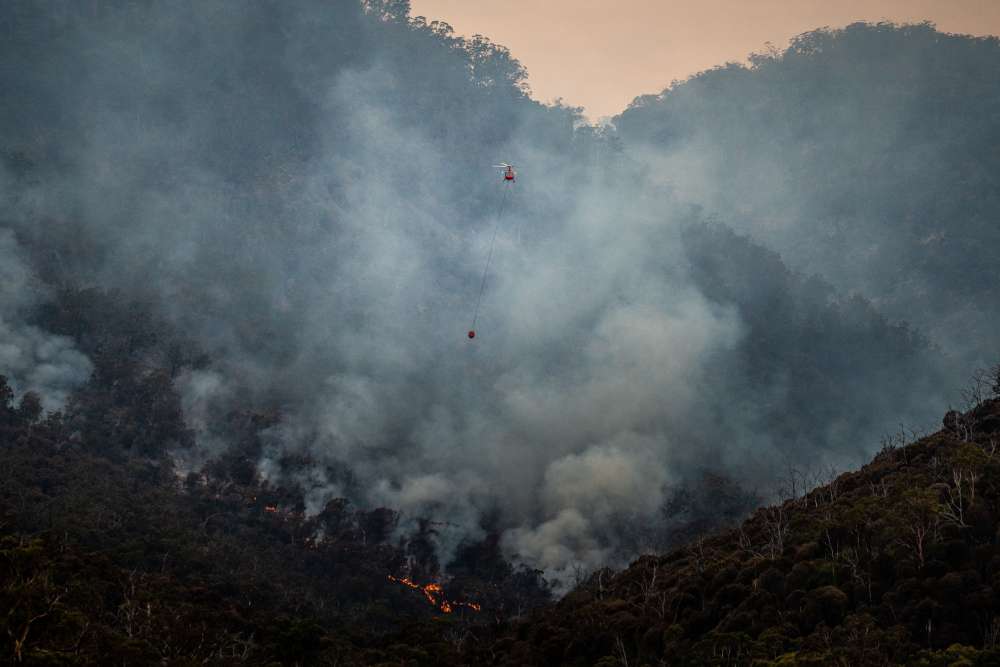
This inclusion of nature in ethics is already happening in humanitarian institutions today, but remains largely implicit and instrumental to the goal of saving human lives. Humanitarians’ new nature ethic is most clearly visible in the new Climate and Environment Charter of Humanitarian Organizations, which affirms clear principles of environmental protection alongside the protection of human life.
In light of the climate crisis, it is morally obvious that humanitarians should shift to a concern for all life and for continuing biodiversity. We should make clear that nature is valuable not simply because it is essential to our survival, but also because it is intrinsically valuable in itself. In the myth of Noah, God wanted animals on the ark because they were animals, not just because humans needed them. Human life is just one form of life that makes up the world. In this sense, the climate humanitarian must become an all-life emergency worker.
Three New Operational Principles
Beyond catastrophe ethics and the inclusion of nature, three other moral obligations are evolving as principles in the emergency ethics of the climate crisis: anticipation, adaptation and mitigation.
With new technology improving meteorological forecasting and early warning efforts, humanitarians can now predict when cyclones, storms, heatwaves, droughts, floods, fires, and smog are on their way. Anticipatory action is an exciting new field of humanitarian aid, and one that was largely pioneered by the German Red Cross and the German government. In the spirit of Emmanuel Kant, knowing what will happen places a new moral responsibility on us to do something about it in advance. Ignorance is no longer an excuse for inaction – and if we can act, then we must act. This makes anticipation a moral obligation and thus a new guiding principle for humanitarians.
Adaptation is another moral responsibility brought about by knowledge of the climate emergency. In many parts of the world, we now know that simply repairing buildings can allow them to be destroyed again in a storm or become dangerously hot in a heatwave. In areas with recurring droughts, farming in the same way will yield less and less. Designing health services around current diseases makes them ill-prepared for the spread of new illnesses caused by climate change.
Aid that does not help people to adapt is an incomplete and wrongful humanitarian act that is morally insufficient because it leaves populations just as vulnerable to hazards and risks as they were before. It requires humanitarians to act in willful ignorance of better outcomes. As an emergency response, the choice to simply repair and replace necessities is often morally negligent and unjust. Improvement by adaptation, therefore, becomes a moral imperative in the climate emergency, which also includes helping people to move to new areas in evacuation strategies of ‘managed retreat’. Adaptation is a new principle that ensures that humanitarian action is fairer and more just — not technically unreasonable and self-defeating.
Another important moral duty in humanitarian action is mitigating the environmental damage committed by humanitarian agencies themselves and transitioning them to renewable energy. Greening our own organizations is a new ethical principle for humanitarian agencies. And while this should be the general principle, we should be open to exceptions in certain situations where it may still be necessary to burn a lot of carbon to save a lot of human life and biodiversity – like using aircrafts to extinguish forest fires. But such calculations need serious deliberation and cannot function as a routine alibi for the humanitarian sector to avoid mitigation.
The Practice Challenge
The most fundamental shifts that the climate emergency requires of humanitarians are structural changes to practices and partnerships – i.e., the things that they actually do to protect and assist people.
Here again, there must be both continuity and urgent evolution as humanitarians confront disasters that are of a totally different scale, nature, universality, and frequency to wartime crises. Many humanitarian agencies are out of practice in dealing with events like floods and cyclones since becoming so absorbed in war. Most have never had to respond to extreme urban heatwaves, forest fires and intense pollution – but they do have important experience of winterization, displacement and drought, which routinely coincide with war just as they do with the climate emergency.

Now Is the Era of Disaster Risk Reduction
The humanitarian sector’s urgent need to quickly change its practice can be hugely helped by the brilliant work over the last 40 years on Disaster Risk Reduction (DRR). While mainstream humanitarians evolved to work in war, a resolute band of disaster professionals has continued to work around the world, honing both the theory and practice of disaster management. Like the Jedi of Star Wars, these DRR champions are the wise remnant of an earlier age who can help to save us now. Their philosophy and skill – elaborated in the Sendai Process and embodied above all in the International Federation of the Red Cross and Red Crescent (IFRC) and many Asian governments and NGOs – contain much of the disaster practice that is now so essential to saving lives and averting damage in the era of the climate crisis.
DRR is a set of knowledge and practices whose time has come, and humanitarians must now scale-up this approach and implement it around the world. Its analysis of the dynamics of disaster and its strong practical focus on risk reduction and resilience is the best model we have for working with communities and governments worldwide. Most importantly, DRR’s basic principles and approaches are easy to scale, and work just as well for a country as they do for a village.
The Shift to Nationally and Locally-Led Responses
If DRR has the vision and practices we need, then a commitment to locally-led disaster responses is the big business-model change that humanitarian institutions must implement. International institutions cannot do everything themselves – nor should they. These organizations are too expensive and imperious, and they often establish parallel systems of humanitarian response that are largely independent from government responses and can disempower citizens. This practice is not fit for purpose in the climate emergency. Relying exclusively on international institutions is a waste of money and a duplication of effort, both of which will be in short supply as climate-related disasters increase all around the world.
The last 30 years has seen the dramatic expansion of international humanitarian capacity. The next 30 years require the exponential expansion of national and local humanitarian capacity. Every country needs a resilient and integrated nation-wide network of DRR and emergency management. It is the job of international institutions to invest in these localized efforts, not compete with them. Many international agencies should step back from frontline operations and enable national and local services to play this role.
A New Model, Mindset and Niche for Internationals
This means that international humanitarian agencies need to change their business model from a business-to-customer model (B2C) that sees them as serving people directly to a business-to-business model (B2B) in which they become investors in scaling up national institutions. This way, money will go further and disaster-affected citizens can directly call on their governments to demand improved performance. International humanitarian institutions can then concentrate on supporting a worldwide response, rather than becoming operationally bogged down in particular interventions. The bulk of today’s humanitarian investments are entrenched in complex international operations in 10 countries, when the same money could be more widely spread to enable national operations in 100 countries.
This model change, coupled with the massive scale of the climate emergency, will change humanitarians’ sense of their own importance. This shift will require humanitarian actors to adopt a new mindset and find a different niche. After years of playing the big beast of wartime emergencies, humanitarian organizations must come to terms with being much smaller, enabling animals in the larger ecosystem of global climate action. They must find a good niche in which they can make a significant contribution to the wider goals of climate action and play a mutualist role with bigger beasts – much like the algae that help form coral reefs. This means making effective and strategic partnerships, especially in their neighboring biome of development aid and development finance.
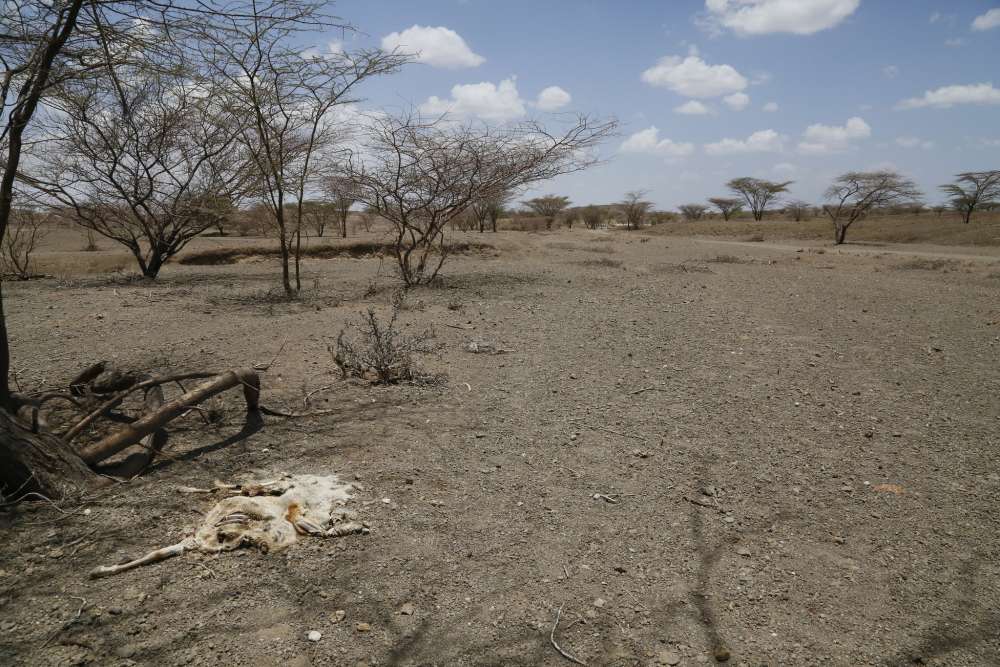
In particular, humanitarians must work out their place on the spectrum of adaptation practices. As a small player working mainly with those most affected by the climate emergency, humanitarians will not be able to invest in the trillion-dollar transition and adaptation projects required to reconfigure human society and infrastructure within the climate crisis. But they can find ways to start helping particular groups of vulnerable people to adapt.
For example, humanitarians cannot build new cities – but they can work with people in increasingly uninhabitable areas to prepare for their managed retreat and accompany their integration. Humanitarians cannot construct new systems of urban cooling or rural irrigation, but they can ensure that these innovations include marginalized groups, just as they do today with social protection, education and health services. In this way, humanitarians can play a niche role in ensuring just transitions and preventing maladaptation for some of the poorest people in society.
The Cultural Challenge
Finally, it is important to look at cultural change in the humanitarian profession. Organizational culture is so important to the way an institution imagines, thinks and behaves. The climate emergency will bring about several significant culture changes in the daily lives and emotional assumptions of humanitarians – and embracing these will be vital to their success.
A Long View
First, the climate emergency requires humanitarians to adopt an organizational culture with a long view. The climate emergency is what Thomas Hale calls a “long problem”: it is already underway and it is here to stay. The climate crisis will not stop – indeed, it will get much worse. Climate-related hazards are already more frequent and intense, and people around the world are suffering because of them. The climate emergency has no end point in time or space, and will only increase in its universality and severity, especially if we overshoot our emissions targets and pass some of the irreversible tipping points of environmental change.
Today’s humanitarians are used to long wars that flare up over years, gradually making societies poorer. The patterns of fighting and humanitarian consequences remain basically the same over time, changing by intensity but not by nature. In contrast, the climate emergency will rapidly usher in completely new types of threats and hazards over the next few years: massive recurring floods, cyclones, extraordinary heatwaves, fire, and smog. Large parts of the globe will become uninhabitable, while cold, northern regions become newly habitable. With all this will come a massive re-evaluation and relocation of the global economy away from carbon to renewables, and away from the hot South to the warming North.
Humanitarian organizations need to adopt a 20-year view if they are to plan for this climate reality and re-shape their structures accordingly. They need to envisage the longue durée of the climate emergency and design their organizations around it. And they must find equally long-sighted investors who are ready to help them take this step.
Asymmetric Power
On a mental level, the sheer scale and novelty of the climate emergency will outstrip the current sense of self and mental habits of war humanitarians. Further, it will pose huge challenges to the imagination, emotions, behavior, and agency of individual humanitarian actors.
The universal scale and operational singularity of the climate crisis will disorientate humanitarians who are used to feeling in charge and well-resourced. Such feelings of powerlessness and insignificance may be new to humanitarians, who often feel like ‘the big guys on the block’ in war times. In the climate emergency, however, they will be unable to say: ‘we are used to this’ and ‘this is our scene’. Many situations in the climate crisis will be extremely foreign to humanitarians and unlike their typical wartime neighborhood and its familiar warzone atmosphere.
There are also much bigger players than humanitarians in the climate scene – and much larger flows of money swirling around them. Climate action is a whole-world and whole-of-society effort involving every kind of organization. Unlike in the warzones of Syria or Yemen, when it comes to the climate emergency, humanitarians are small fish in a big pond.
Humanitarians’ lack of cultural familiarity with the climate emergency and their relative powerlessness within its response system requires a new sense of modesty and agility in humanitarian culture. Humanitarians need to again embrace being small in the face of a huge new threat. This is a time of renewed novelty, of risk and experiment, of the rapid adoption of practices that work – and not the stale repetition of the status quo. It is not quite a start-up mentality, but it needs a start-up spirit: a culture of David, not Goliath.
The climate emergency will also not be something happening ‘over there’ for the international elites who lead humanitarian agencies and are used to talking about faraway wars. Climate disasters will also be happening ‘over here’: inside and outside their homes and offices in New York, Geneva, Nairobi, Bangkok, and beyond. The climate emergency is a universal emergency. As such, it is much more like COVID-19 and the world wars, and not like the wars that humanitarians have been ‘going into’ and ‘coming out of’ for the last 30 years. This too, may be something of a culture shock. Humanitarians will always be in the climate emergency, wherever they are.
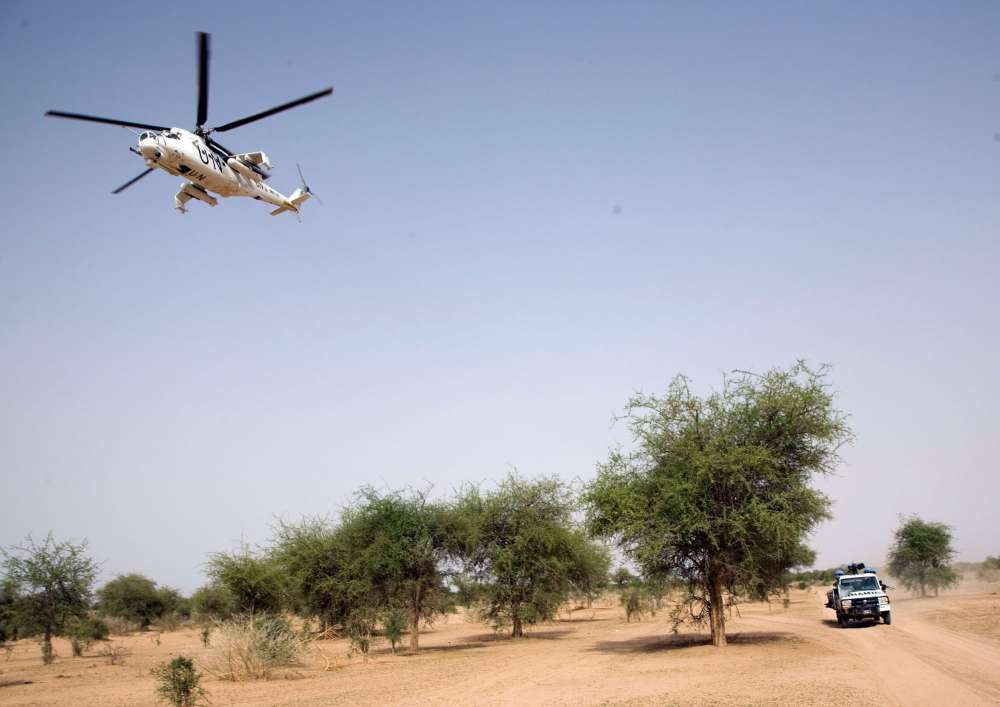
A Duller Identity
Finally, humanitarians may lose much of their allure in the climate emergency because climate disasters are not as emotionally gripping as war. At a personal level, this is a good thing – but it can be a real problem in the attention economy that shapes our worldview. Wars – and thereby war humanitarians – always catch media and individual attention because they engage our fascination with human violence. Our interest is instantly piqued by killing, wounding and bloodshed – by the embodied horrors of our own inter-personal aggression. A painter of storms is never as popular as a painter of battles. This means war routinely steals the headlines from climate, just as it did recently when the war in Ukraine trumped climate at the G7 summit.
Climate-related disasters are not sexy. They never have been. There are many wonderful humanitarian experts and aid workers who have been slowly and brilliantly working on floods, cyclones, hunger, heatwaves, and fires for the last 40 years. They have constructed the vital theories and practices of DRR that are essential to our survival in the climate emergency. But they are never lionized or publicly admired. They are the unglamorous side of humanitarianism, while the adventurers who charge into warzones are somehow more appealing and attract our attention.
These cultural perceptions have been a big driver of war humanitarianism. Climate humanitarians must create a similarly urgent allure. Or, they must turn their lack of attention into a virtue by quietly building a global system of emergency response that is culturally unsensational – just like the millions of unknown engineers who have steadily built the sewers, water systems and power stations that keep life going, but create no celebrities.
Such a minimal profile and low-ego culture would be a big change for today’s war humanitarians. But it might be a good thing, and would likely attract a culture of committed professionals. As Stefan Dercon has suggested, it is a good sign when disasters are dull.
Reshaping a Profession
Inevitably, this reflection on how the ethics, practice and culture of humanitarian institutions will change in light of the climate emergency is speculative. Some of it may be right and some of it will be wrong.
However, it is extremely important that today’s humanitarian institutions recognize that the climate crisis demands a massive evolution in the way they think, work and behave. Climate is not another ‘issue’ to be mainstreamed into what organizations already do. It is, and will be, the most extreme, continuous and universal emergency that modern humanitarians have ever faced. And we must be ready to face it.
This essay is based on a public lecture given at the University of Jena on June 24, 2023 as part of the master’s program “International Organisations and Crisis Management” (IOCM).

